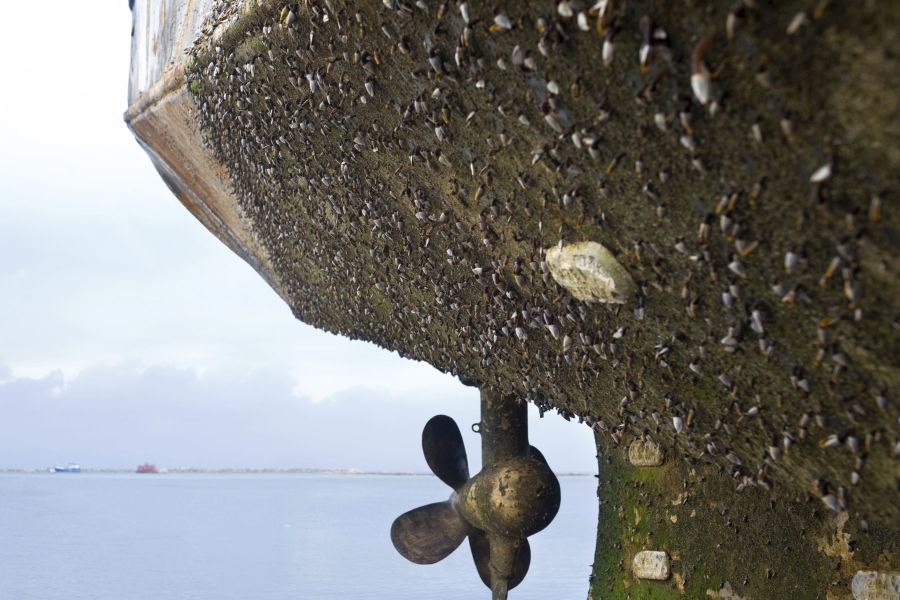

Ship hulls and other underwater structures are constantly exposed to seawater. Over time, this causes mussels, barnacles and algae to gather on the underwater structures. This phenomenon is known as biofouling. It occurs particularly on ship hulls and in niches and is subject to the marine region, the salinity, and its composition, as well as the marine fauna and flora. Biofouling leads to higher fuel consumption, reduced manoeuvrability, a reduction of the maximum possible speed, increased wear, accelerated corrosion and shorter maintenance intervals.
Until now, biofouling could only be removed mechanically or prevented by means of toxic antifouling paints. A process patented by bioplan GmbH and further developed by the Fraunhofer Institute for Microstructure of Materials and Systems IMWS now offers a more environmentally friendly solution for this biofouling process: electrochemical antifouling.
By means of water electrolysis on conductive paint layers, coating systems on a ship's hull become fouling-resistant. A combination of a moderately conductive outer lacquer with a much more highly conductive inner lacquer is applied over large areas. The paint thus serves as an electrode for electrolysis. Based on these electrically conductive and seawater stable paint layers, the electrolysis current is uniformly distributed over large areas (> 0.5 m²) using computer-controlled and stable direct current sources. The outer layer of the varnish at times acts as an anode, where oxygen and chlorine are produced, so that the water in the immediate vicinity of the surface becomes acidic and the pH value drops. The polarity of the current flow is then reversed at regular temporal intervals so that the lacquer layer now becomes the cathode, where hydrogen is produced, thus creating an alkaline environment. Now the pH value increases again. The constant change creates a pH and redox stress that prevents the settlement of microorganisms.
The electrochemical antifouling system further developed at the Fraunhofer IMWS does not require biocidal materials and can be used universally but requires a constant energy supply due to the necessary permanent current flow.
Based on existing prototype solutions, the basic understanding of this electrochemical antifouling system is to be improved and demonstration examples developed within the “Hansenetzwerk”, an association of various Fraunhofer institutes. With the help of the network, the results are to be communicated to various industrial partners to further develop the electrochemical antifouling system and bring its application to maturity.
The "Hansenetz" is a technology network in the field of aquaculture funded by the state of Schleswig-Holstein where seven Fraunhofer Institutes have joined forces: the Fraunhofer Research Institution for Individualized and Cell-based Medical Engineering IMTE, the Fraunhofer Institute for Microstructure of Materials and Systems IMWS, the Fraunhofer Institute for Manufacturing Technology and Advanced Materials IFAM, the Fraunhofer Institute for Computer Graphics Research IGD, the Fraunhofer Institute for Molecular Biology and Applied Ecology IME, the Fraunhofer Institute for Integrated Circuits IIS and the Adaptive Systems Development EAS division. The aim of the network is to combine various innovative technologies to improve the ecological and economic balance of aquaculture.